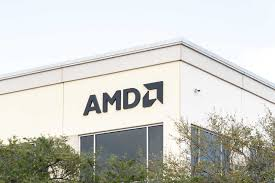AMD open to acquisition of firms in India as part of its expansion plan, fueling India’s semiconductor dream with jobs, startups, and AI innovation.
What if India became the next global hub for advanced chip design and AI hardware?
That question no longer feels futuristic. With AMD open to acquisition of firms in India as part of its expansion plan, the world’s second-largest semiconductor company is signaling a long-term commitment to India’s digital growth story.

From smartphones to data centers, semiconductors are the silent engines powering our daily lives. As India doubles down on its ambition to be self-reliant in electronics and AI, AMD’s strategy could be a game-changer for startups, investors, and policymakers alike.
In this blog, we’ll unpack what AMD’s expansion means, why acquisitions are on the table, and how this move ties into India’s larger technology ecosystem.
🌏 Why India Matters in AMD’s Global Playbook
India is no longer just a market for global tech companies; it’s becoming the innovation lab.
- Talent Pool: India produces nearly 15 lakh engineers every year, with a growing number specializing in semiconductor design, AI, and machine learning.
- Government Push: Initiatives like the Semicon India program and PLI (Production-Linked Incentives) are creating fertile ground for investment.
- Digital Boom: With over 820 million internet users and rapid 5G adoption, demand for chips in smartphones, data centers, EVs, and IoT devices is skyrocketing.
AMD already employs thousands of engineers in Bengaluru and Hyderabad. By considering acquisitions, AMD is signaling that India isn’t just a cost center — it’s a growth engine.
🧠 What You Should Remember
India offers AMD three things: talent, demand, and policy support. Together, they create a rare mix that makes acquisitions attractive.
💼 Why AMD is Looking at Acquisitions Instead of Organic Growth
Building everything from scratch takes years. Acquisitions offer AMD a faster way to:
- Access Niche Capabilities: Indian startups are innovating in areas like chip verification, AI accelerators, and embedded systems.
- Boost Market Presence: Buying an established local player means instant access to clients and supply chains.
- Stay Ahead of Competitors: Rivals like Intel and NVIDIA are also investing in India. Acquisitions ensure AMD doesn’t fall behind.
Think of it like cricket: instead of grooming a rookie from day one, AMD is signing a trained all-rounder who can start hitting sixes from the first over.
🧠 What You Should Remember
Acquisitions save time, reduce risk, and accelerate growth — crucial in a fast-moving tech race.
🔑 What Kind of Companies Could AMD Target in India?
AMD’s acquisition radar is likely focused on capability-driven firms rather than large manufacturers.
Possible Target Areas:
- Semiconductor Design Firms – Startups working on chip verification, design automation, or AI chips.
- AI & HPC Startups – Companies focused on high-performance computing for data centers and research.
- Embedded Systems & IoT Players – With India’s smart-device market booming, IoT firms are attractive.
- Specialized Software Firms – Tools for chip design, simulation, and security.
Example: Bengaluru and Hyderabad host dozens of deep-tech startups that could complement AMD’s global R&D roadmap.
🧠 What You Should Remember
AMD isn’t likely to buy a “big flashy brand” — instead, it’ll hunt for hidden gems that add niche value.
📊 How AMD’s Move Aligns With India’s Semiconductor Dream

India has set aside ₹76,000 crore under the Semicon India program to boost local chip production and design. Companies like Vedanta-Foxconn, Micron, and ISMC have already announced projects.
AMD’s acquisitions could:
- Strengthen India’s chip design ecosystem.
- Attract more global investment.
- Create skilled jobs in design, testing, and AI hardware.
- Accelerate India’s push to reduce dependence on imports.
This is similar to how Infosys and TCS in the 90s transformed India into a global IT hub. Today, semiconductors could be the “IT moment” of this decade.
🧠 What You Should Remember
AMD’s plan isn’t isolated — it fits into India’s bigger semiconductor strategy and boosts national self-reliance.
⚔️ Competition: How NVIDIA, Intel, and Qualcomm Are Playing in India
AMD isn’t alone in eyeing India.
- NVIDIA: Partnering with Reliance and TCS for AI cloud infrastructure.
- Intel: Running one of its largest R&D centers in Bengaluru.
- Qualcomm: Investing in 5G and IoT startups.
The message is clear: India is the new battlefield for global chip giants.
For AMD, acquisitions could create a differentiator. Instead of just setting up labs, it could own startups that bring proprietary IP (intellectual property).
🧠 What You Should Remember
The global chip war is shifting to India, and AMD wants a first-mover advantage in acquisitions.
📈 What This Means for Indian Startups

If you’re a deep-tech startup founder, AMD’s interest is both an opportunity and a wake-up call.
Opportunities for Startups
- Funding & Exit Path: Acquisitions create lucrative exits for founders.
- Global Market Access: Startups gain AMD’s global network.
- Skill Enhancement: Teams get exposure to world-class R&D practices.
Risks for Startups
- Loss of Independence: Acquired firms may lose flexibility.
- Integration Challenges: Merging into a giant can slow down innovation.
In cricket terms: startups may go from being the star batsman of their local club to playing in the IPL under strict coaching.
🧠 What You Should Remember
For startups, AMD’s entry means more opportunity, but also more competition and scrutiny.
🌐 Impact on Indian Consumers and Businesses
AMD’s expansion isn’t just about startups or engineers — it will ripple across the economy.
- Cheaper and Faster PCs: Local R&D could make chips more affordable.
- Boost for AI Adoption: SMEs and startups can access high-performance computing.
- Job Creation: Engineers, designers, and researchers get new career paths.
- Stronger Digital Infrastructure: Data centers, 5G, and EVs benefit directly.
Imagine an India where AI-driven healthcare, smarter EVs, and 5G-powered education are built on chips designed locally.
🧠 What You Should Remember
AMD’s acquisitions will indirectly shape consumer prices, job markets, and digital services in India.
📌 Challenges AMD Will Face in India
It’s not all smooth sailing.
- Regulatory Hurdles – Approvals for acquisitions in sensitive sectors like semiconductors take time.
- Talent Retention – High attrition rates in tech could slow integration.
- Competition for Startups – Intel, NVIDIA, and local players may outbid AMD.
- Infrastructure Gaps – India still lacks large-scale chip fabrication facilities.
AMD will need patience, strong partnerships, and policy alignment to succeed.
🧠 What You Should Remember
Challenges exist, but India’s long-term potential outweighs short-term hurdles.
🔮 The Road Ahead: A Win-Win for AMD and India
AMD’s openness to acquisitions signals confidence in India’s future. For India, it validates the country’s position on the global semiconductor map.
In the next 5–10 years, we could see:
- AMD-owned Indian startups shaping global chip design.
- Thousands of engineers contributing to next-gen AI and HPC.
- India emerging as a semiconductor powerhouse, not just an IT services giant.
This isn’t just business strategy. It’s history in the making.
📣 Conclusion: What Should You Watch For?
AMD’s move to acquire firms in India could redefine the tech landscape — from Bangalore’s startup streets to global data centers.
The big question is: Will AMD find the right partners before rivals move faster?
For India, this is a reminder: our talent and startups are no longer just supporting acts — they’re center stage in the global chip race.

Why is AMD looking at acquisitions in India?
To accelerate growth, tap into local talent, and strengthen its chip design capabilities.
Which Indian startups could AMD acquire?
Likely deep-tech firms in semiconductor design, AI, IoT, or high-performance computing.
What risks does AMD face in India?
Regulatory delays, talent retention issues, and tough competition from rivals.
How does this fit India’s semiconductor plan?
It supports India’s goal of self-reliance and global leadership in chip design.
How will AMD’s expansion impact Indian consumers?
Expect better access to affordable, faster chips and AI-powered services.